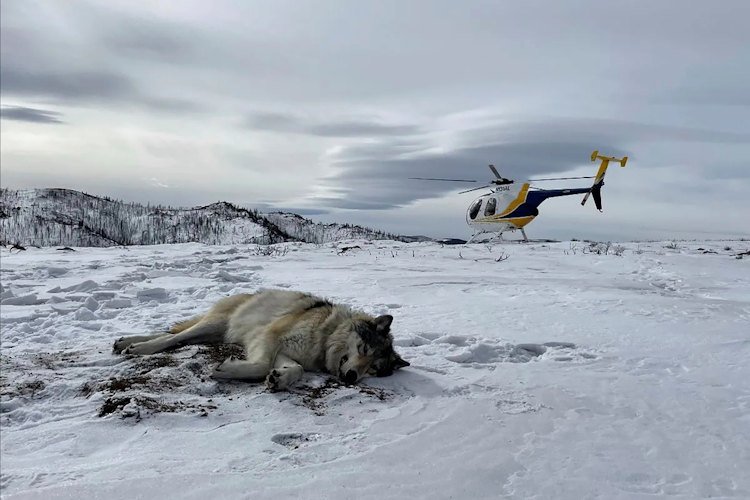US judge to decide Friday if Colorado can reintroduce wolves over cattle industry objections

By MATTHEW BROWN and JESSE BEDAYN
Associated Press
DENVER (AP) — A federal judge said she would decide by Friday whether to temporarily halt the impending reintroduction of gray wolves to Colorado under a voter-approved initiative, after representatives of the state’s cattle industry went to court to try to stop the predators’ release.
If the judge sides with the industry, the decision would scramble Colorado Parks and Wildlife’s plans of searching for, capturing and transporting up to 10 wolves from Oregon starting Sunday.
The wolves are supposed to be released by Dec. 31, the deadline imposed under a 2020 ballot proposal that passed by a narrow margin. The animals would be among the first gray wolves in Colorado in decades.
The Gunnison County Stockgrowers’ Association and Colorado Cattlemen’s Association filed a lawsuit Monday against Colorado Parks and Wildlife and the U.S. Fish and Wildlife Service to halt the releases.
Attacks on livestock would impose “significant costs on the livestock industry and the communities that depend on it,” the groups’ attorneys said. While arguments in court revolved around legal technicalities, they broadly claim that the U.S. Fish and Wildlife Service failed to adequately review Colorado’s plan to release up to 50 wolves onto state and private land over the next several years.
U.S. government attorneys said further environmental reviews were not needed and urged Judge Regina M. Rodriguez to reject the industry’s request.
Any future economic harms suffered by ranchers would not be irreparable, which is the standard required for the temporary injunction sought by the industry, the U.S. Department of Justice attorneys wrote in a court filing. They pointed to a state compensation program that pays owners whose livestock are killed by wolves.
Gray wolves were exterminated across most of the U.S. by the 1930s under government-sponsored poisoning and trapping campaigns. They received endangered species protections in 1975, when there were about 1,000 left in northern Minnesota.
Wolves have since rebounded in the Great Lakes region. They’ve also returned to numerous western states — Idaho, Montana, Wyoming, Oregon, Washington and, most recently, California — following an earlier reintroduction effort that brought wolves from Canada to central Idaho and Yellowstone National Park in the 1990s.
An estimated 7,500 wolves in about 1,400 packs now roam parts of the contiguous U.S. Their return to the central Rocky Mountains of Colorado would achieve a longstanding dream of wildlife advocates and fill in one of the last remaining major gaps in the species’ historical range in the western U.S.
A small number of wolves from the Yellowstone region journeyed across Wyoming to Colorado in recent years. Some of those animals were shot when they wandered back into Wyoming, where shooting them is legal, and they’ve been blamed in Colorado for attacks on sheep and cattle.
Such losses can be devastating to individual ranchers, but their industry-wide impact is negligible.
Colorado officials say they are currently managing only two wolves in the state.
The plan to establish a permanent wolf population through releases of animals captured elsewhere has sharpened divides between rural and urban residents. City and suburban dwellers largely voted to reintroduce the apex predators into rural areas where ranchers worry about attacks on livestock that help drive local economies.
The U.S. Fish and Wildlife Service published an environmental review in September of what is called a 10(j) rule, which permits the killing of wolves in Colorado under certain scenarios — particularly in the defense of livestock — even though the animals are protected federally as an endangered species.
The rule is a key piece of Colorado’s reintroduction plan. The livestock groups contend the review of the rule failed to capture the full consequences of wolf reintroduction.
Colorado Assistant Attorney General Lisa Reynolds requested Thursday’s hearing after the livestock groups sought a temporary restraining order from Rodriguez to stop the wolf releases. Reynolds said in a Wednesday court filing that the releases would not begin prior to Dec. 17.
___
Brown reported from Billings.
___
Bedayn is a corps member for the Associated Press/Report for America Statehouse News Initiative. Report for America is a nonprofit national service program that places journalists in local newsrooms to report on undercovered issues.